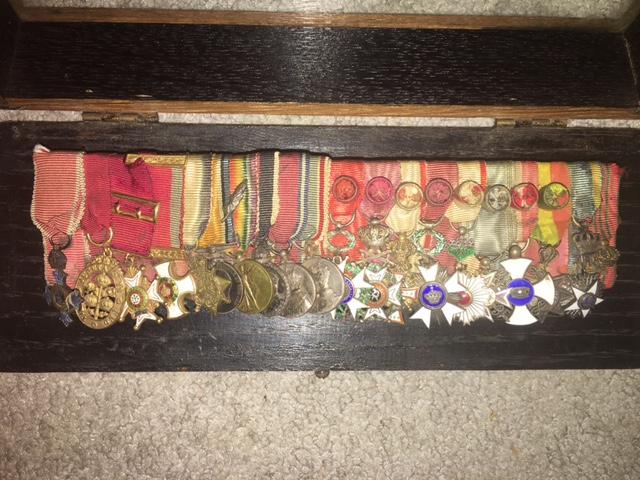We are used to seeing senior officers bearing a few medals and
decorations but none in living memory have been in the same league as the most
famous railway police chief.
By the time of the First World War the North Eastern Railway
Police were among the best organised in the country. At start of war the Chief, Captain William T F HORWOOD, was soon back in
the army and rose quickly through the ranks ending up as Provost Marshall with
the rank of Brigadier General. His swift
upward progress during the war is frequently mentioned in the newspapers. The NER kept his job open until the end of
the war but he was headhunted into a post at New Scotland Yard as an Assistant
Commissioner and then in 1920 becoming Commissioner of Police of the Metropolis.
I might write a few pieces about him
another day but for now I record that he was the most decorated railway and
ex-railway police officer in our history.
Although his knighthoods came after he had left the NER many of his
other awards and medals stem from his service in the war while he was still
Chief of Police for the NER:
Knight Grand Cross Order of the British Empire
Companion of the Bath (Later Knight Commander of the Bath)
Distinguished Service Order
During the war he was Mentioned in Dispatches seven times
He was also awarded:
Croix de Guerre (France)
Croix de Guerre (Belgium)
Officer Legion d’honneur (France)
Officer Order of Leopold (Belgium)
Officer Order of the Crown (Belgium)
Commander Order of Dannebrog (Denmark)
Member (2nd Class) Order of the Rising Sun (Japan)
Grand Cordon, Order of the Crown (Romania)
Member Order of the Crown (Italy)
Member Order of the Star of Ethiopia (Ethiopia)
Member Order of the Nile (Egypt)
He might also have collected the odd jubilee, first aid and
coronation medal along the way.
Although he went on to greater things he never forgot his
role in the NER police and remained an advocate for the promotion of railway
policing and for improvements in conditions for railway police officers. As I
have written elsewhere he was responsible for establishing the link between the
railway forces and the Security Service (Mi5).
During his time at Scotland Yard
he was a regular attender at social events run by the various railway police forces. As these were often formal dinners I imagine
his ’mess dress’ was pretty impressive!
Phil Trendall
Feb 2024
Refs
Dictionary of National Biography
Police Review 12 Jan 1917 p9

Comments
Post a Comment